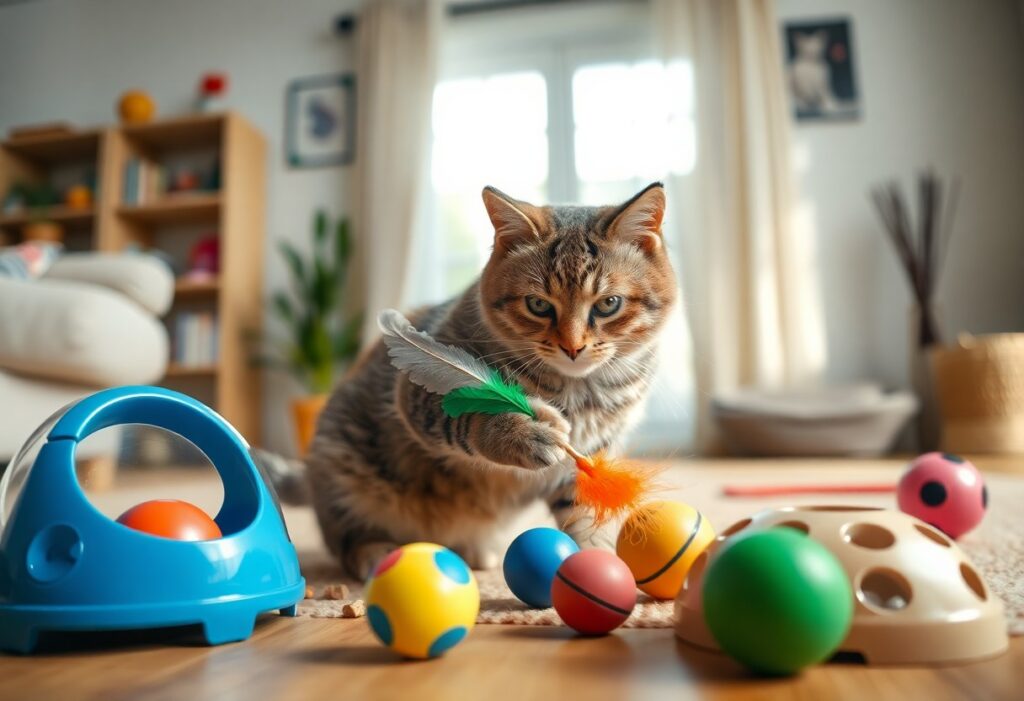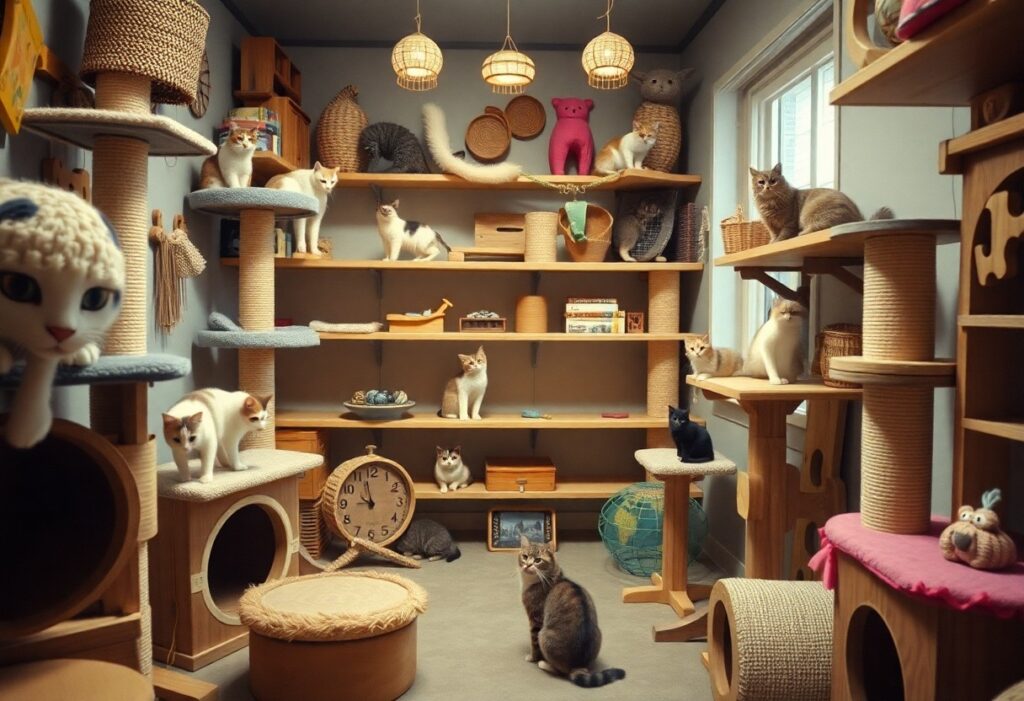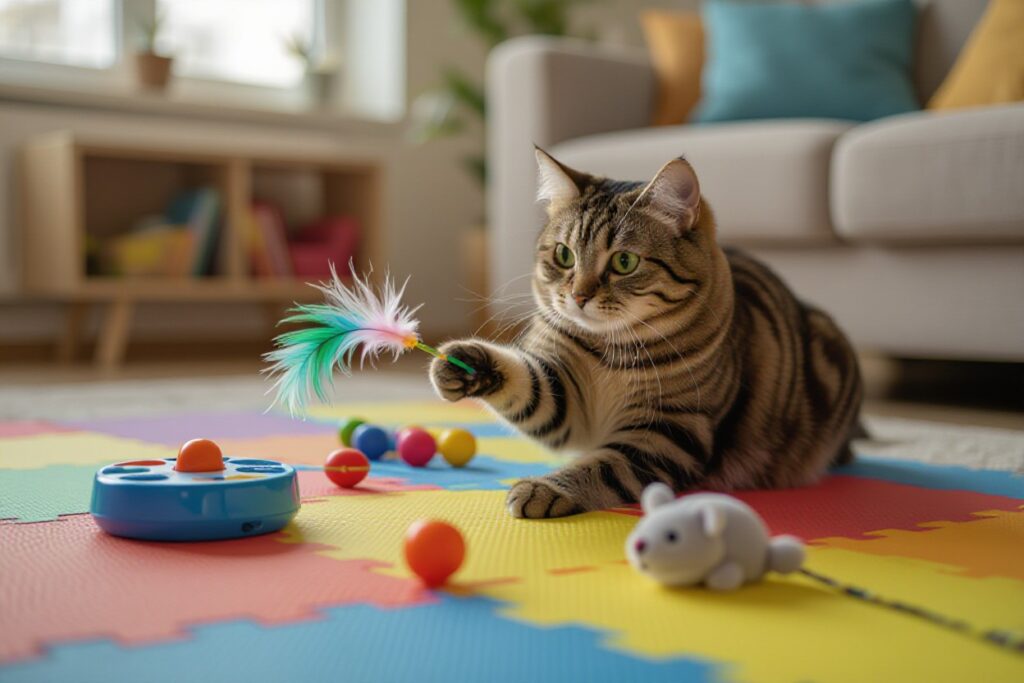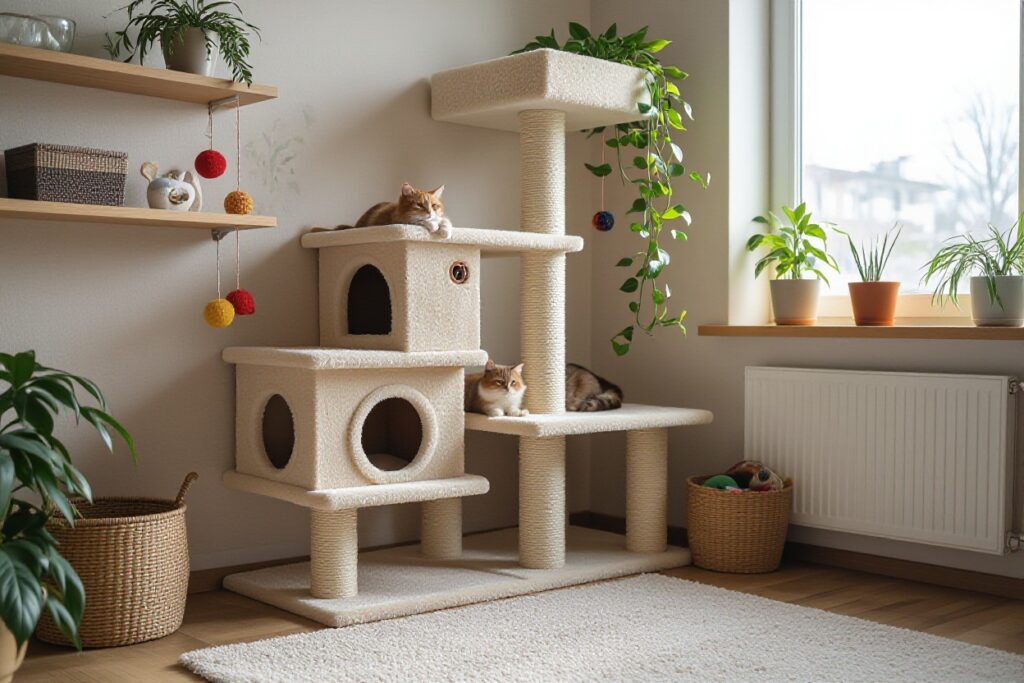Captivating Your Cat’s Attention
Engaging your cat’s attention is necessary to make playtime enjoyable and productive. With so many distractions, you want to find ways to keep your feline friend focused on you and the activities you offer. By utilizing various strategies that appeal to your cat’s natural instincts and interests, you can create an environment that promotes interactive play, mental stimulation, and a stronger bond between you and your pet.
The Art of Interactive Toys
Interactive toys are an excellent way to capture your cat’s interest while encouraging play and mental engagement. From feather wands to puzzle feeders, these toys encourage your cat to exercise their hunting skills. By selecting toys that mimic prey, you can stimulate your cat’s natural instincts, keeping them actively engaged while reducing boredom and unwanted behaviors.
Utilizing Sensory Stimuli
Sensory stimuli can enhance your cat’s playtime experience by engaging their senses of sight, sound, and smell. By incorporating elements like vibrating toys, colorful feathers, and sounds that mimic birds or small animals, you will foster a more gratifying environment for your cat. This sensory-rich atmosphere not only keeps your cat’s attention but also nurtures their curiosity and enthusiasm during playtime.
To get the most out of sensory stimuli, consider varying the types of experiences you offer your cat. For example, switch between visual stimuli, such as bright laser pointers or moving toys, and auditory stimuli, like noise-making gadgets that imitate prey sounds. Additionally, introducing toys with different textures and scents can further enrich your cat’s play sessions. By providing a diverse range of sensory experiences, you will not only stimulate your cat’s mind but also strengthen your bond through interactive engagement.
Key Takeaways:
- Utilize a variety of toys and puzzles to keep your cat engaged and stimulated during playtime, encouraging both physical activity and mental stimulation.
- Incorporate interactive games that involve your participation, such as hide-and-seek or chase, to strengthen the bond between you and your cat.
- Schedule regular play sessions and maintain a playful attitude, as consistency and enthusiasm can greatly enhance your cat’s enjoyment and willingness to engage in training activities.
The Power of Structured Play
Structured play is vital for your cat’s mental and physical well-being. By providing a consistent framework, you help your feline friend engage in more enriching activities that satisfy their natural instincts. This approach not only promotes good behavior but also enhances the bond between you and your pet, transforming playtime into an exciting adventure.
Setting a Routine for Fun
Establishing a playtime routine is a fantastic way to keep your cat feeling secure and engaged. Choose specific times each day dedicated to interactive play, allowing your cat to anticipate and look forward to these moments. Consistency in play strengthens your cat’s trust in you while also satisfying their innate need for stimulation.
Time-Limited Play Sessions for Engagement
Utilizing time-limited play sessions can enhance your cat’s focus and excitement. By keeping sessions short, around 10 to 15 minutes, you maintain your pet’s interest while also preventing overstimulation. This technique not only encourages better play behavior but also allows you to incorporate more varied activities into your routine.
Using time-limited play sessions keeps your cat’s attention sharp and reduces the risk of boredom. When you limit each session to about 10 to 15 minutes, your cat is more likely to stay engaged and enthusiastic. To maximize effectiveness, switch up the types of toys and activities you introduce—this keeps the play fresh and exciting. Ending a session on a high note encourages your cat to look forward to the next one, reinforcing the positive association with playtime and helping them develop a healthy lifestyle.
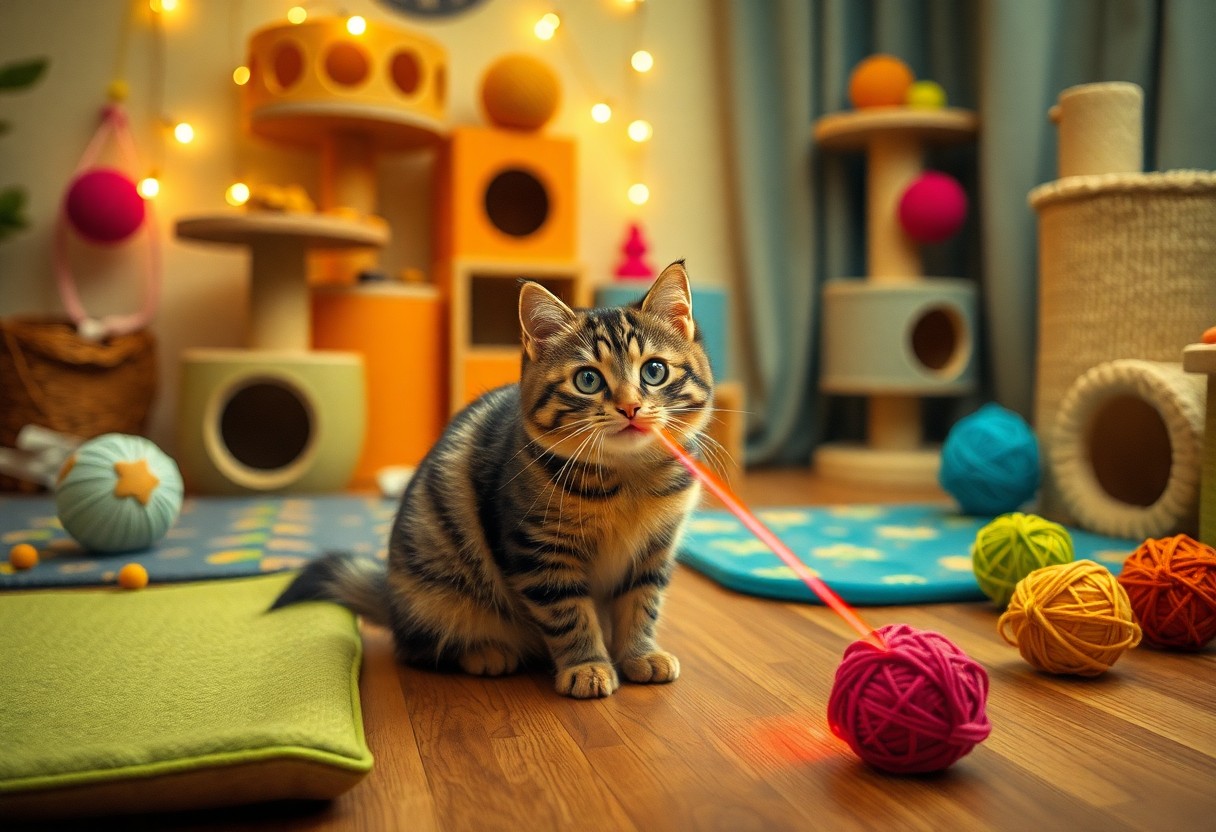
Enriching the Environment
Creating a stimulating environment for your cat is crucial for their mental and physical well-being. By enriching the space around them, you can encourage natural behaviors, reduce stress, and enhance their overall happiness. Utilize a variety of toys, textures, and scents to engage their senses, making playtime both fun and rewarding.
Creating a Cat Paradise
Transform your home into a cat paradise by incorporating cozy spots, interactive toys, and scratching posts. Choose a variety of surfaces for your cat to explore, such as carpeting, sisal, or natural wood. Adding items like cat trees or tunnels will provide your feline friend with a stimulating environment that caters to their instinctual desires to climb, hide, and play.
Incorporating Vertical Spaces for Exploration
By adding vertical spaces, you can give your cat the opportunity to explore and climb, which is a natural instinct. Consider installing shelves or purchasing cat trees that reach towards the ceiling. This allows your cat to observe their surroundings from a higher vantage point, engaging them mentally and physically. Vertical spaces not only provide entertainment but also become a personal territory for your cat, reducing the risk of boredom and behavioral issues.
The Magic of Positive Reinforcement
Harnessing the power of positive reinforcement can transform your cat’s playtime into an engaging opportunity. By rewarding desired behaviors with treats, praise, or even playtime, you create a positive association between the behavior and the reward. This not only enhances your cat’s learning experience but also strengthens the bond you share. As you consistently apply this method, you’ll notice how your feline friend eagerly participates during training while having fun at the same time.
Treats as Rewards for Engagement
Offering treats as rewards during playtime is an effective way to encourage your cat’s participation. By giving a small treat every time your cat responds positively to your cues or engages in play, you reinforce the behavior. This encourages your feline companion to repeat the action, thus fostering a more interactive and stimulating environment. Always ensure that the treats are healthy and suitable for your cat’s diet.
Vocal Praise and Encouragement Techniques
Your voice can be a powerful tool in training your cat. Use vocal praise and a cheerful tone to show your approval whenever your cat engages in the desired behavior. This positive feedback helps your cat associate your praise with the specific actions they’re performing, motivating them to repeat these behaviors. Tailoring your vocal cues to include a mix of enthusiasm and affection will make your pet feel appreciated and enhance their overall playtime experience.
By incorporating vocal praise techniques, you create an atmosphere of encouragement for your cat. Use a lively and joyful tone to convey your excitement, and consider including different words or phrases that resonate with them. Cats tend to respond well to familiar sounds, so consistently using the same praise words will help your feline partner understand what behaviors you appreciate. Over time, this technique reinforces their confidence and encourages them to engage in a more interactive play session with you.
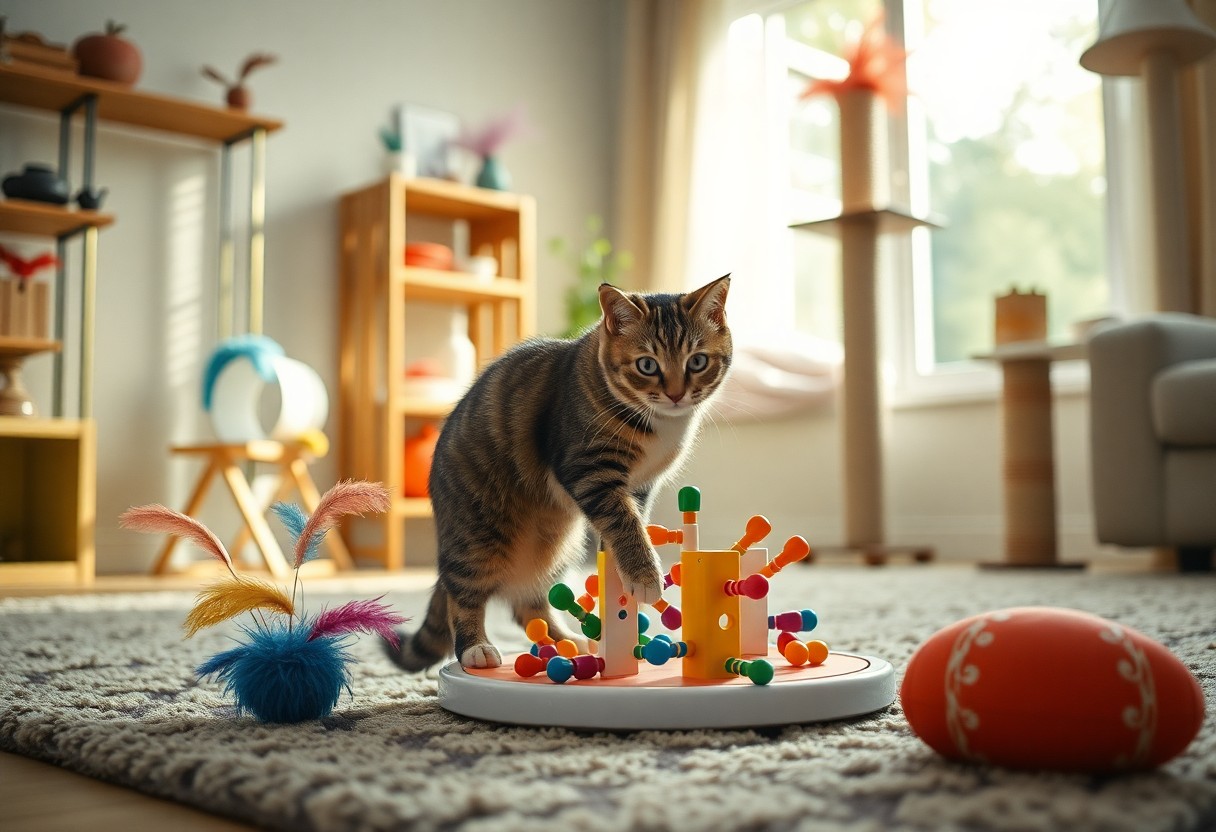
The Role of Observation in Training
Observation plays a significant role in effectively training your cat. By closely watching your feline’s behaviors and reactions, you can identify what motivates them and what causes stress. This awareness helps you tailor your training techniques, ensuring a positive experience during playtime. Engaging in training sessions becomes much easier when you actively observe your cat’s preferences and boundaries, allowing for a more fruitful connection.
Understanding Feline Body Language
To train your cat successfully, it’s imperative to understand their body language. Signals such as tail positioning, ear orientation, and facial expressions can reveal how your cat feels during training. When you recognize signs of stress or discomfort, you can make adjustments to improve their experience, leading to a more enjoyable and effective training session.
Adapting Techniques Based on Individual Preferences
Every cat is unique, and adapting your training techniques to cater to your pet’s individual preferences can enhance the effectiveness of your sessions. Tailor your approach by observing what your cat enjoys, whether it’s a specific toy, treat, or the presence of certain scents. Understanding their likes and dislikes not only boosts their motivation but also fosters a strong bond between you and your cat.
As you adapt your training strategies, make sure to take into account your cat’s personality traits. For instance, if your cat is shy, using gentle encouragement and patient interaction may yield better results. On the other hand, more playful or curious cats might respond well to agility-based activities. By observing how your cat reacts to different stimuli, you can fine-tune your approach. This practice promotes a safer and more engaging environment, transforming training sessions into rewarding playtime experiences.
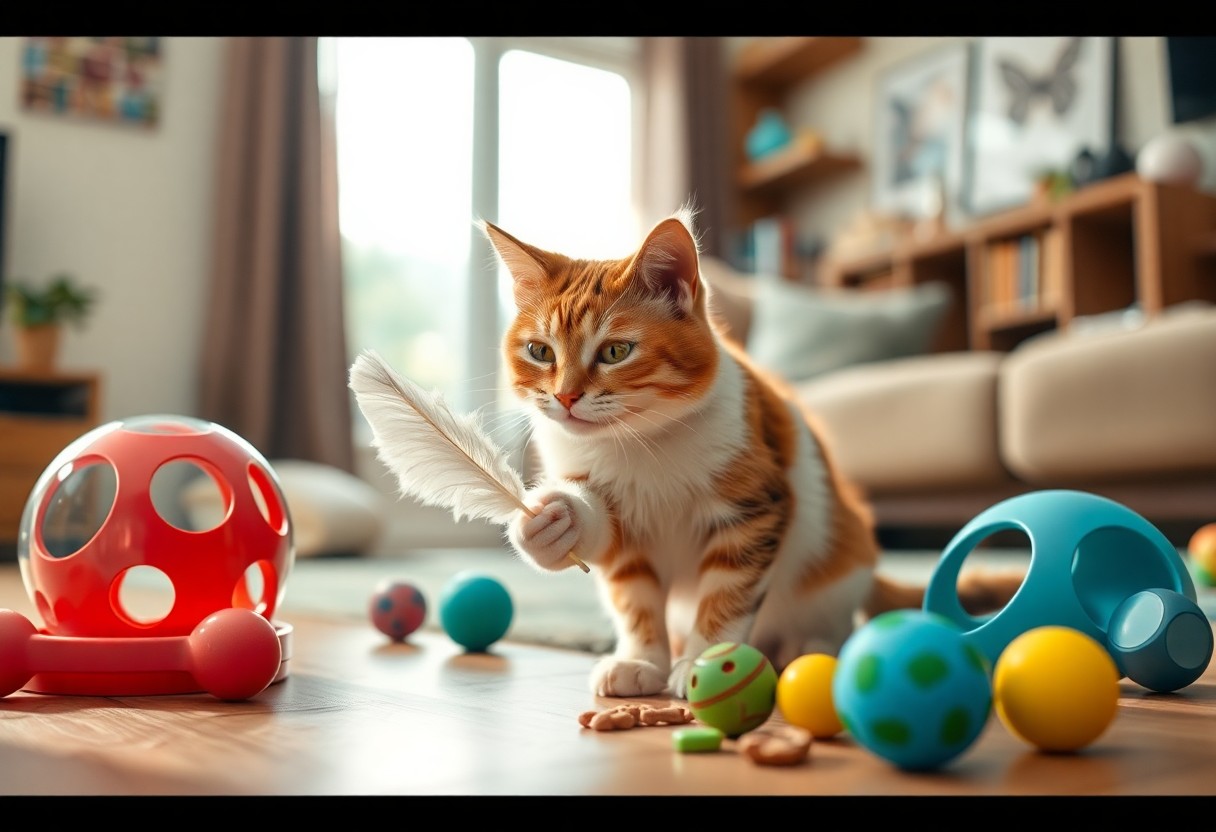
Incorporating Training into Play
Integrating training into your cat’s playtime is an excellent way to enhance both their mental and physical stimulation. By blending fun activities with learning opportunities, you can keep your cat engaged while instilling imperative behaviors. This approach not only strengthens your bond but also promotes a more content and well-adjusted feline. Aim for short sessions that incorporate tricks and commands amidst playful interactions, ensuring your cat remains enthusiastic and eager to learn.
Teaching Tricks through Game Mechanics
You can transform ordinary play into an educational experience by using game mechanics that captivate your cat’s attention. For instance, using feather wands or interactive toys, you can teach them to perform tricks like jumping or pawing on cue. Associating play with commands makes the learning process enjoyable and keeps your cat mentally sharp. The key is to maintain a lively atmosphere that encourages your cat to participate eagerly.
Using Clicker Training for Enhanced Interaction
Clicker training is a highly effective method to boost your interaction during training sessions. The sound of the clicker serves as a positive reinforcement tool, helping your cat associate their actions with rewards. When your cat performs a desired behavior during play, promptly click the device followed by a treat or praise to reinforce the action.
With clicker training, you can create an enriching experience that builds trust between you and your cat. The clicker acts as a signal of success, making it clear when they are on the right track. Start by pairing the clicker sound with treats to build your cat’s understanding. As your cat learns to associate the click with rewards, you can introduce commands during playtime. This structured approach not only makes learning fun but also enables your cat to feel appreciated and engaged, ultimately leading to a happier, more cooperative pet.
To wrap up
Presently, employing these 10 training tricks can significantly enhance playtime with your cat, transforming it into a rewarding and interactive experience. By being mindful of their behaviors and preferences, you can create a stimulating environment that nurtures their instinctual needs while strengthening your bond. These strategies not only keep your cat engaged but also foster trust and understanding between you. So, investigate these techniques and watch your playful interactions flourish for a happier, more fulfilled feline family member.
FAQ
Q: What are some effective toys to use during interactive playtime with my cat?
A: Selecting the right toys is important for engaging your cat during playtime. Consider using feather wands, laser pointers, or interactive puzzle toys that stimulate your cat’s hunting instincts. These toys can encourage physical activity while providing mental stimulation. Rotate the toys regularly to keep your cat interested and excited about playtime.
Q: How can I incorporate training commands into playtime without it feeling like work for my cat?
A: To make training feel like an enjoyable part of playtime, start by using positive reinforcement. Use treats or praise when your cat follows commands during play. Keep training sessions short and fun; try integrating commands like “sit” or “high five” before launching into play with their favorite toy. This method will maintain a casual atmosphere, allowing your cat to associate commands with enjoyable experiences.
Q: What are some signs that my cat is enjoying playtime and should I adjust the intensity of our sessions based on those signs?
A: Signs that your cat is enjoying playtime include purring, playful pouncing, and a relaxed body posture. If your cat begins to lose interest—exhibiting signs like sitting still, walking away, or seeming distracted—it may be time to wrap up the session or switch to a different activity. Adjust the intensity of the play based on your cat’s energy levels; some cats may prefer energetic play while others might enjoy a more laid-back session. Always follow your cat’s cues to ensure that the experience stays positive for both of you.
